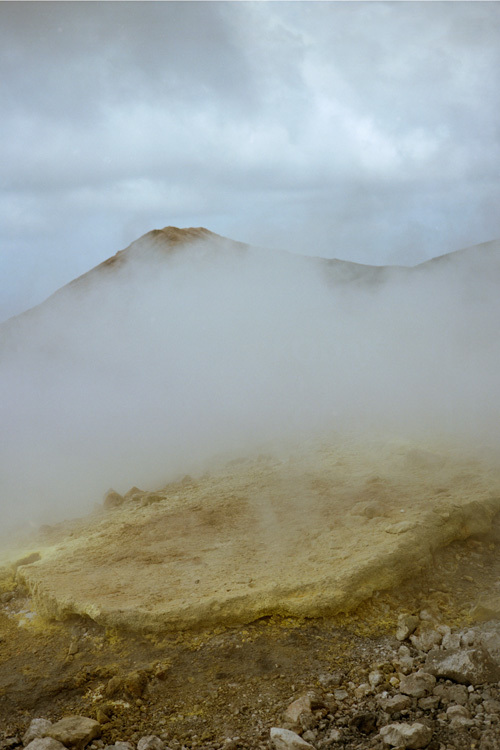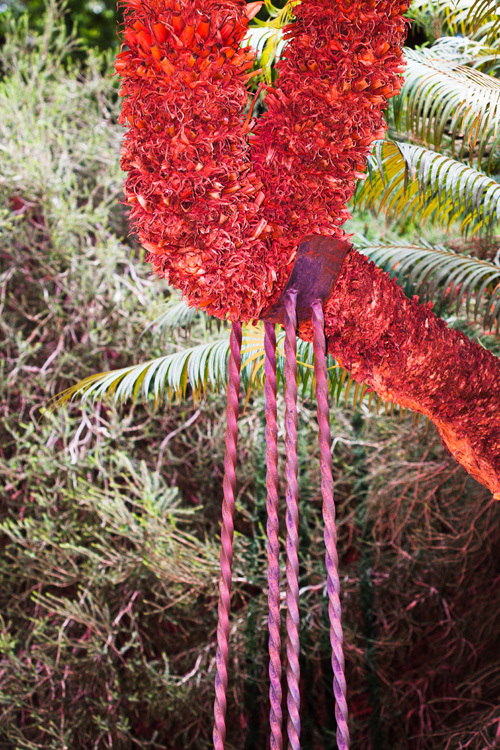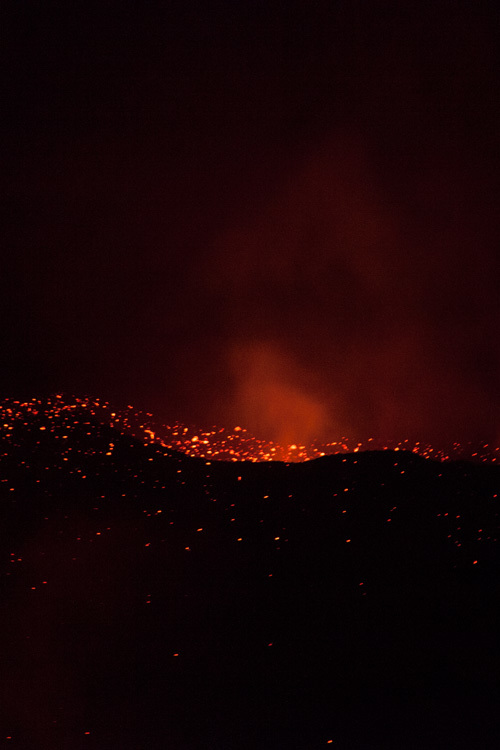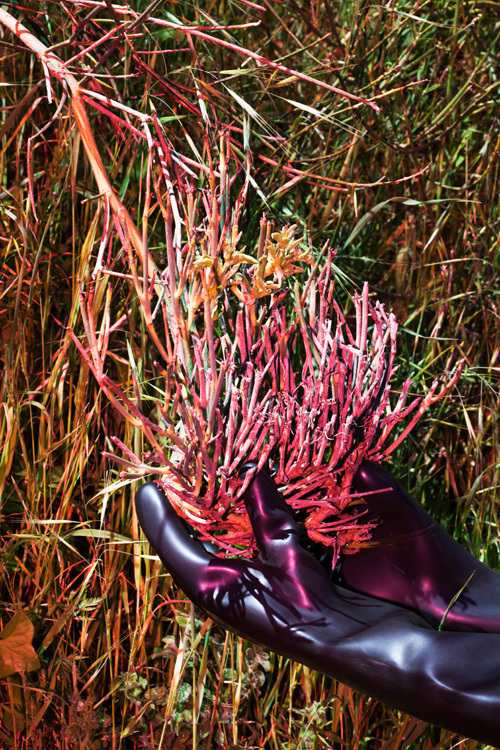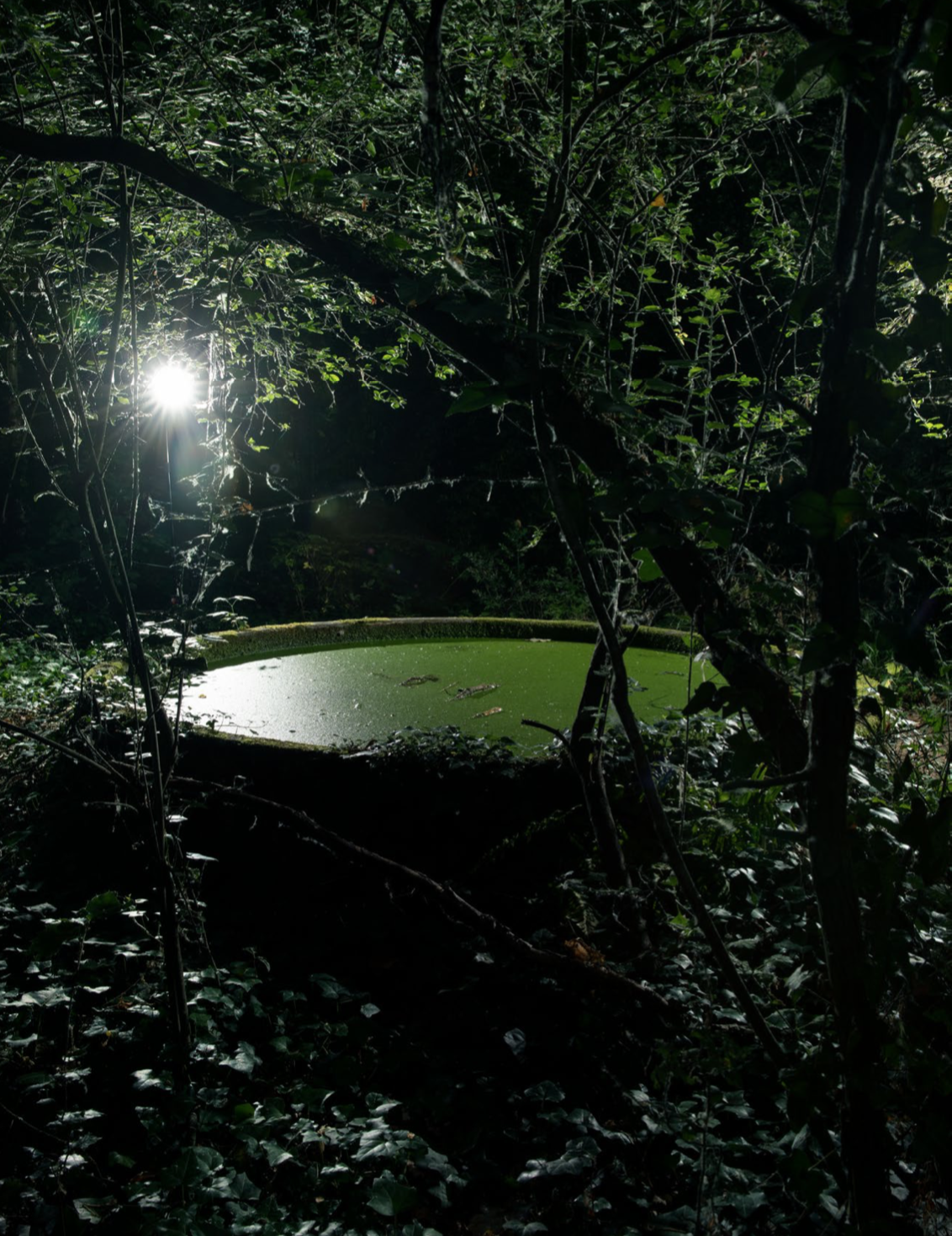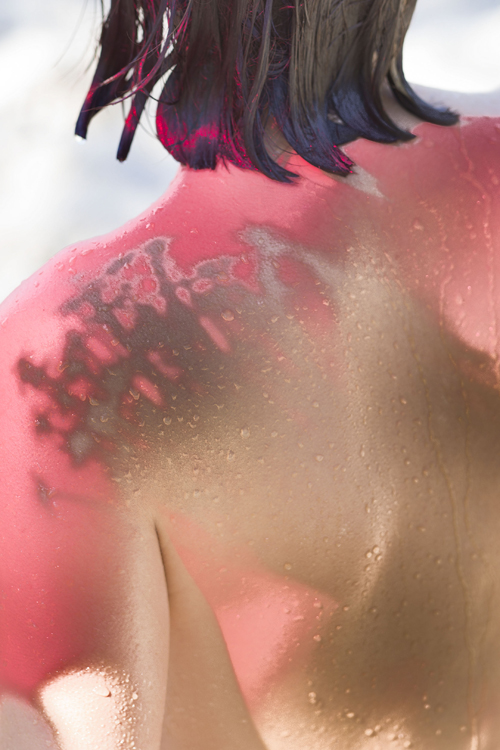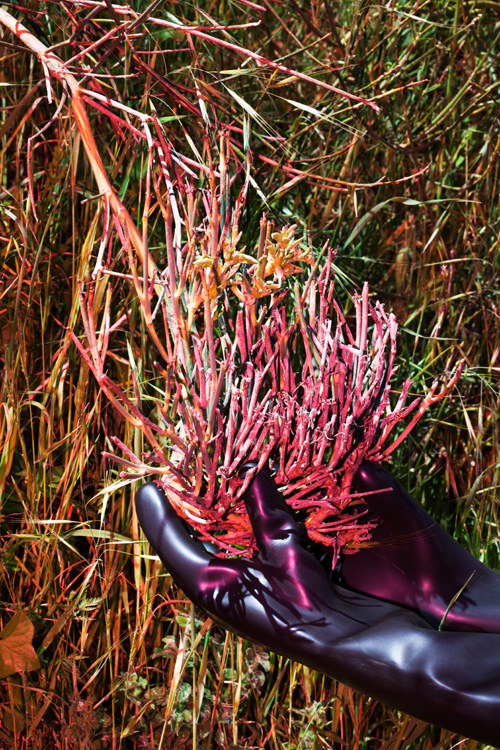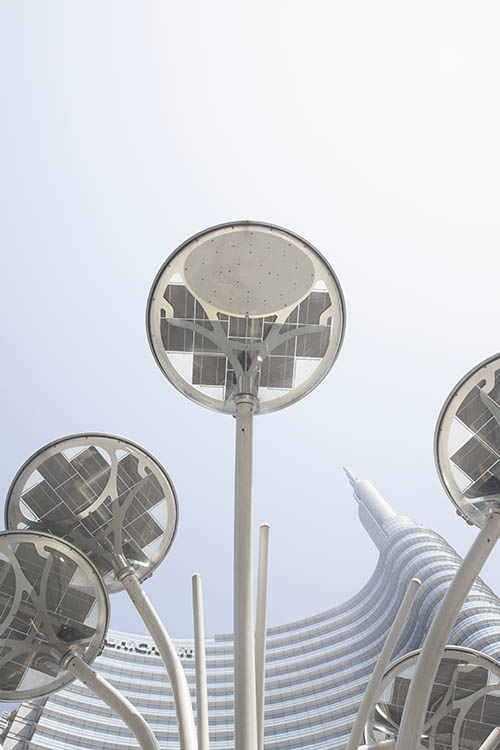L’île Himero
ENMan’s fascination for volcanoes is immemorial. The fear towards them is at the origin of many myths and has never ceased to mark iconography, literature and the collective imagination.
Despite scientific progress, man still cannot predict breakouts. Their unpredictability, their grandeur and their savage beauty confronts man with a powerful nature, anthropomorphised independently by generations and civilisations everywhere.
Often emblem of violent impulses, madness, symbols of destruction, volcanoes are also worshipped and represent a source of life and energy. This ambivalence and perilous balance between life and death renders volcanoes deeply captivating subjects.
Alice Pallot is fascinated by natural phenomena, metamorphoses, silent realities and the link that a man maintains to his environment. The Aeolian Islands therefore naturally emerged as a major element in her series. Meeting scientists and natives, her exchange with a vulcanologist, a native of Stromboli, who had a fusional relationship with the volcano was decisive. Alice Pallot recounts her spellbinding experience of ascending Vulcano and Stromboli, both still active. She experiences the omnipresence of the volcanoes, the cohabitation of man and his symbiotic relationship with his Strombolian environment. The inhabitants personify the volcanoes and live with them according to their moods.
Alice Pallot’s journey is punctuated by vernacular stories and beliefs, a secular oral tradition told by locals. The activity of the volcano has brought out a rich lexic on of the landscape.
Descriptive rhetoric has hence elevated it to an allegory of the living being: sleep, awakening, eruption, anger, rumbling ... Rational description then instantly blends into the imaginary.
The boundaries are then increasingly thin between reality and phantasmagoria, man and nature. As you walk, the visions become feverish and highlight the enigmatic nature of the environment, where the elements blend together like mirages.
This almost supernatural journey, peaceful and on the fringes of the world, creates a fictional island.
The viewer thus gradually immerses himself in the universe of Himero Island.The harshness of the geographic environment and the insularity of the setting merge with anaesthetic of vital momentum through the importance of colors. We find on the fertile mineral soil bathed in geothermal energy, Thermus aquaticus. Organisms living in the craters ofvolcanoes, they feed on lava and sulfur extract and represent an extremely interestingsource for scientists, their enzymes used for DNA amplification method in molecular biology.
Strange plants then unfurl to meet a mouth spewing out high-temperature sulfur crystals, mollusks strewn the fiery black sand, electric blue science gloves come into the frame.
We then discover an architectural structure: the scientific research center of Himero Island. Finally, a Madonna seems to emerge from fumaroles or from the crater, from an alchemical place where matter seems to be transfigured. Therefore emerges a viatic imagination of thevolcano, a divine manifestation or the image of a foster mother.
Alice Pallot's work is immersive and the testimony of spontaneous exploration. Thecomposition of the images was developed during the ascent of the volcanoes, allowing acommon thread to intuitively emerge guiding her shooting, without post-production. From afusion of imaginary ideas, fiction and real landscapes emerges a form of poetic documentary.
The last photograph opens and closes the series to create a cycle. As if out of time, we then wonder if we get there, if we leave, if we will stay there forever; whether the experience was real or the result of an illusion; if, ultimately, we carry Himero Island within us.
FRLa fascination des hommes pour les volcans est immémoriale. La crainte à leur égard est à l'origine de nombreux mythes et n'a cessé de marquer l'iconographie, la littérature et l'imaginaire collectif.
En dépit du progrès scientifique, les hommes ne sont toujours pas en mesure de prévoir les éruptions. Leur caractère imprévisible, leur grandeur et leur beauté sauvage met l’homme face à une nature puissante qu’il n’a cessé d’anthropomorphiser.
Souvent figures de pulsions ou de folie, symbole de destruction, les volcans sont aussi vénérés et représentent une source de vie et d'énergie. Cette ambivalence et cet équilibre périlleux entre vie et mort participent à en faire des objets captivants. Alice Pallot est fascinée par le lien qu’entretient l’homme à son environnement, les phénomènes naturels, les métamorphoses, les réalités silencieuses. Les îles Éoliennes sont donc naturellement apparues comme un élément majeur de sa série. A la rencontre de scientifiques et d’autochtones, son échange avec un vulcanologue natif de Stromboli entretenant un lien fusionnel avec
le volcan fut déterminante. Alice Pallot retrace son expérience envoûtante de l’ascension de Vulcano et de Stromboli, toujours en activité. Elle éprouve l'omniprésence du volcan, la cohabitation de l’homme et sa relation symbiotique avec son environnement strombolien. Les habitants personnifient le volcan et vivent avec lui selon ses humeurs.
Le cheminement d’Alice Pallot est ponctué d’histoires et de croyances vernaculaires, tradition orale séculaire contée par les habitants. L’activité du volcan a fait émerger un riche lexique du paysage. La rhétorique descriptive l’a ainsi élevé en allégorie del’être vivant : sommeil, réveil, éruption, colère, grondement... La description rationnelle se mêle alors instantanément à l’imaginaire.
Les frontières sont de plus en plus minces entre réel et fantasmagorie, homme et nature. Au rythme de la marche, les visions se font fiévreuses et mettent en exerguele caractère énigmatique de l’environnement, où les éléments se fondent commedans un mirage.
Ce voyage presque surnaturel, paisible et en marge du monde engendre la création d’une île fictive. Le spectateur s’immerge ainsi progressivement dans l’univers de l’île Himero.
L’âpreté et l’insularité du cadre se mêlent à une esthétique de l’élan vital par l’importance des couleurs. On trouve sur le sol minéral fertile baigné d'énergie géothermique, des Thermus aquaticus. Organismes vivant dans les cratères desvolcans, ils se nourrissent d’extraits de lave et de soufre. Leurs enzymes permettant d’amplifier la chaîne d’ADN, ils représentent une source extrêmement intéressante pour les scientifiques.
D’étranges végétaux se déploient alors pour rencontrer une bouche crachant des cristaux de soufre à haute température, des mollusques jonchent le sable noir ardent, des gants scientifiques bleu électriques s’immiscent dans le cadre.
On découvre ensuite une structure architecturale : le centre scientifique de recherchede l’île Himero.
Enfin, une madone semble émerger de fumerolles ou du cratère, d’un lieu alchimique où la matière paraît se transfigurer. Affleure ainsi un imaginaire viatique du volcan,l’image d’une manifestation divine ou d’une mère nourricière.
Le travail immersif d’Alice Pallot est le témoignage d’une exploration spontanée. La composition des images a été élaborée pendant l'ascension des volcans laissant émerger intuitivement un fil rouge guidant sa prise de vue, sans post-production. La fusion d’idées imaginaires et paysages réels engendre une forme de documentaire poétique.
La dernière photographie ouvre et referme la série pour créer un cycle. Comme hors du temps, on se demande alors si l’on y arrive, si l’on part, si on y restera à jamais; si l'expérience était réelle ou le fruit d’une illusion ; si, en fin de compte, l’on porte l’IleHimero en nous.
Constance Nguyen
• Sept-Oct 2020: Solo Show, "L'Ile Himero", Satellite Gallery, Biennale de L’image Possible de Liège
• April 2019: Group exhibition, "L'Or Bleu", N'Oblige Gallery, Paris
• October 2018: "Fisheye Magazine", Hors-série, Year Book 2018
• July 2018 - September 2018: Les Rencontres photographiques d'Arles, group exhibition, Voies-Off, Jute Gallery, Arles
• June 2018: Group exhibition, Hangar Art Center, Brussels
• June 2018: Roger De Conynck's Price.
• July 2018: Selected at " Artagon contest"
Thanks to Labographie, Saskia Gevaert, Marguerite Barroux and Nicolas Stolarczyk.
Text: Constance Nguyen
• April 2019: Group exhibition, "L'Or Bleu", N'Oblige Gallery, Paris
• October 2018: "Fisheye Magazine", Hors-série, Year Book 2018
• July 2018 - September 2018: Les Rencontres photographiques d'Arles, group exhibition, Voies-Off, Jute Gallery, Arles
• June 2018: Group exhibition, Hangar Art Center, Brussels
• June 2018: Roger De Conynck's Price.
• July 2018: Selected at " Artagon contest"
Thanks to Labographie, Saskia Gevaert, Marguerite Barroux and Nicolas Stolarczyk.
Text: Constance Nguyen


